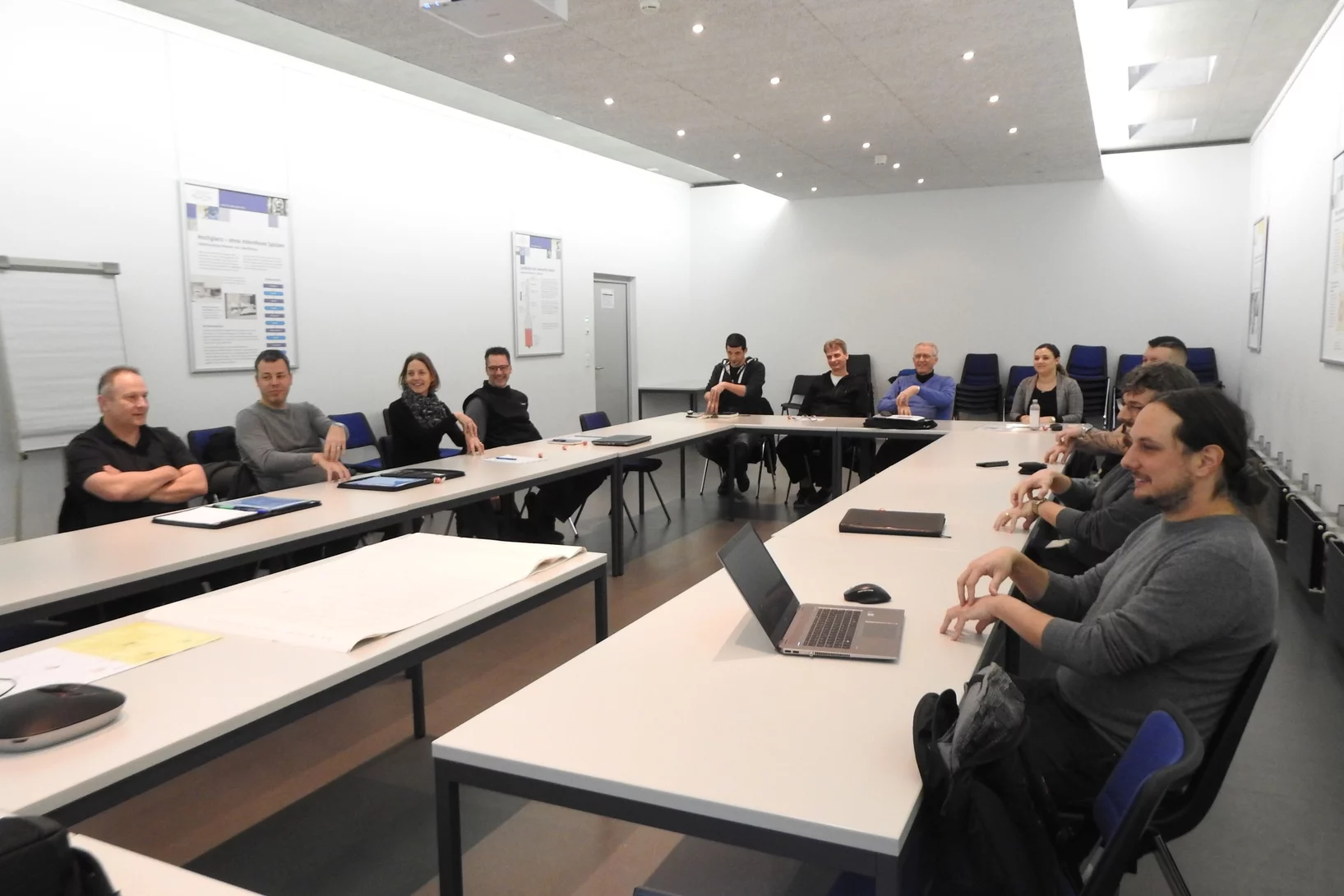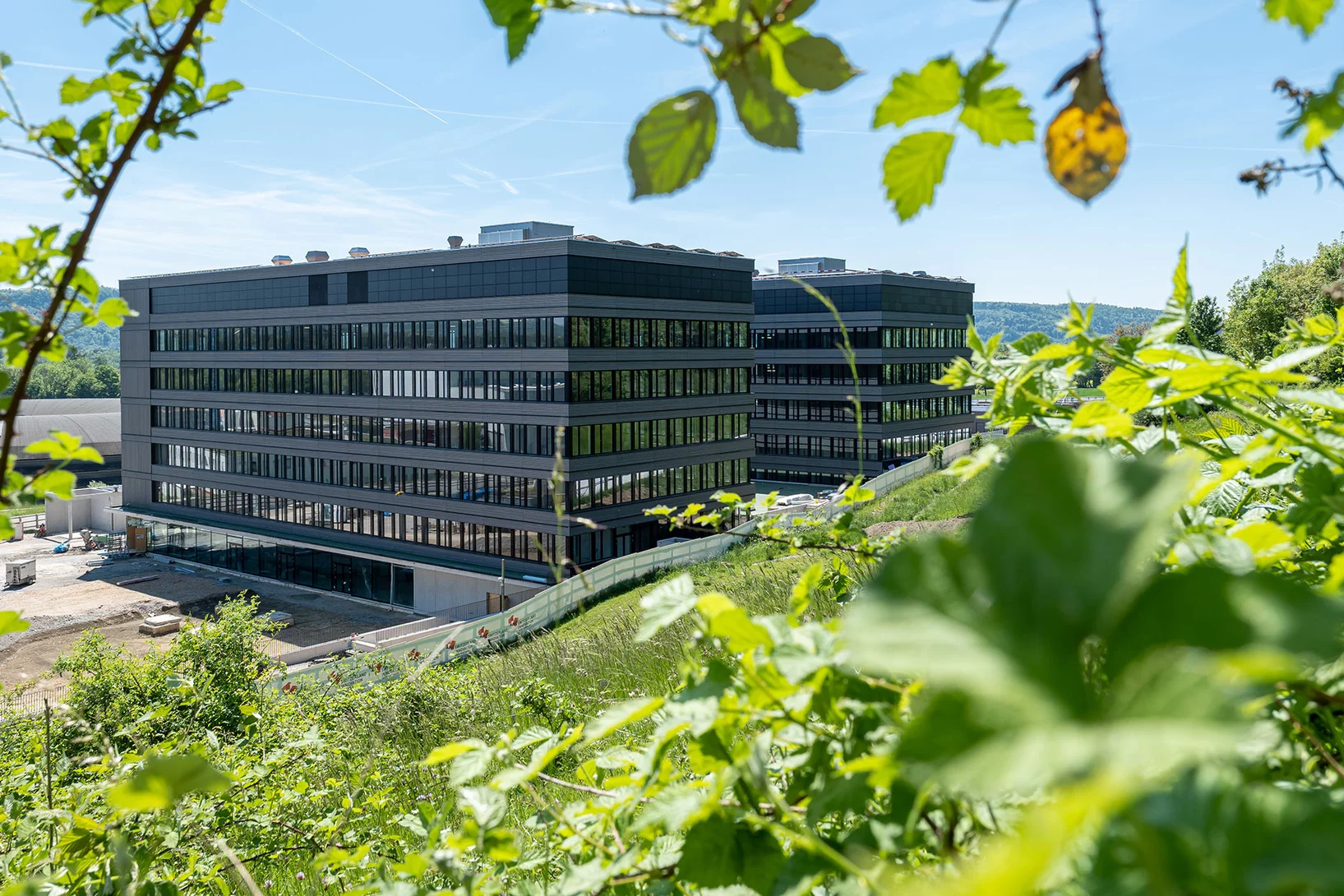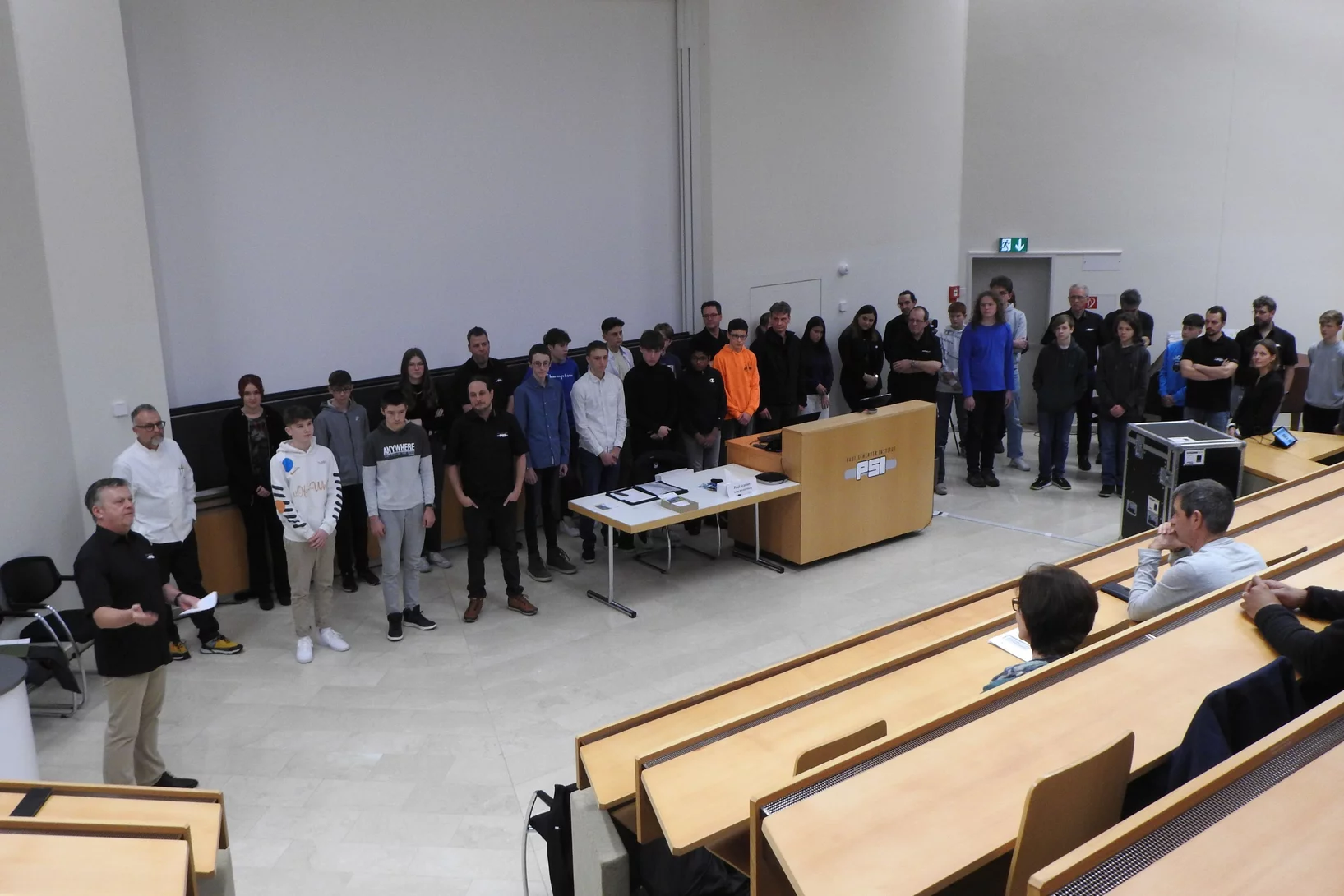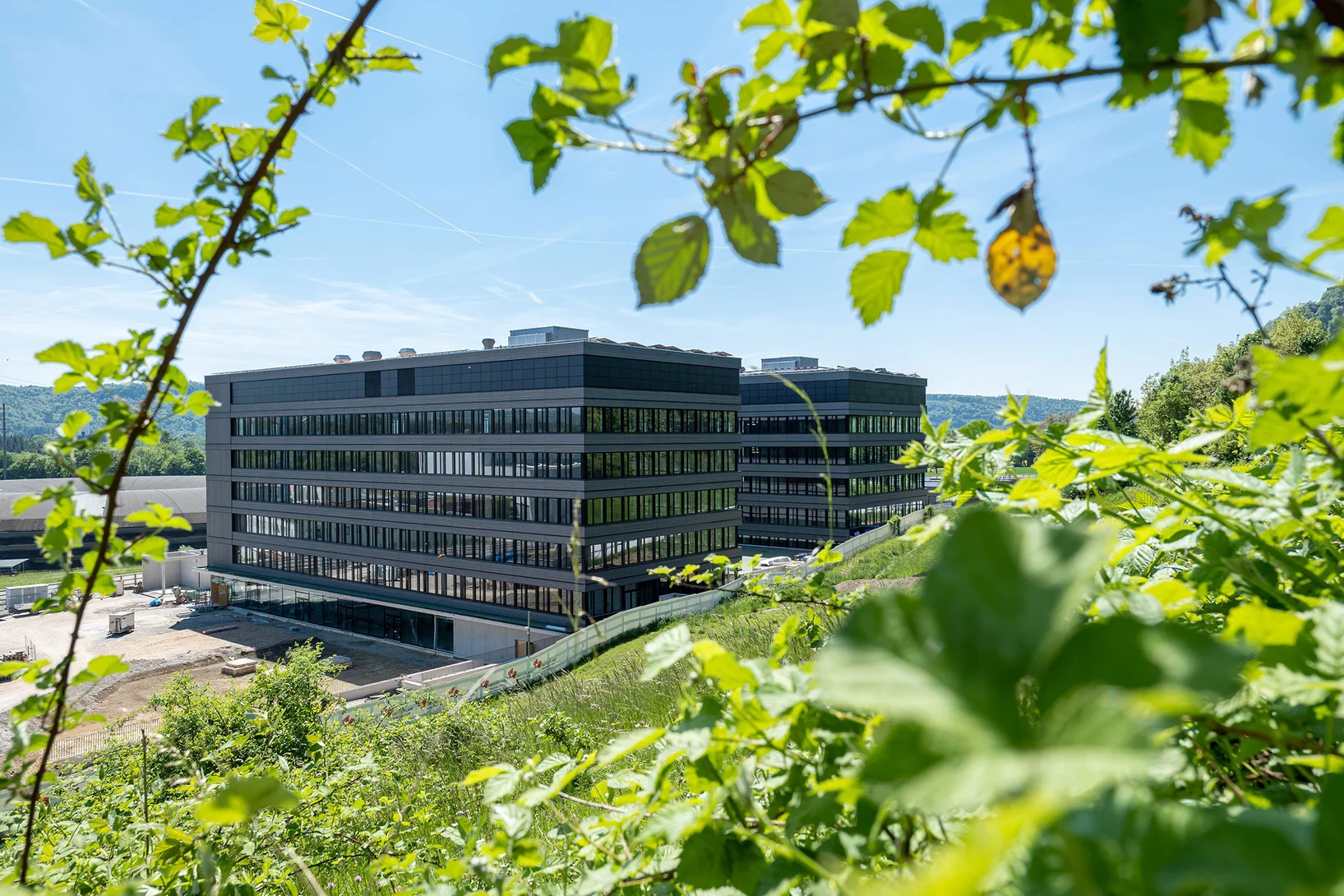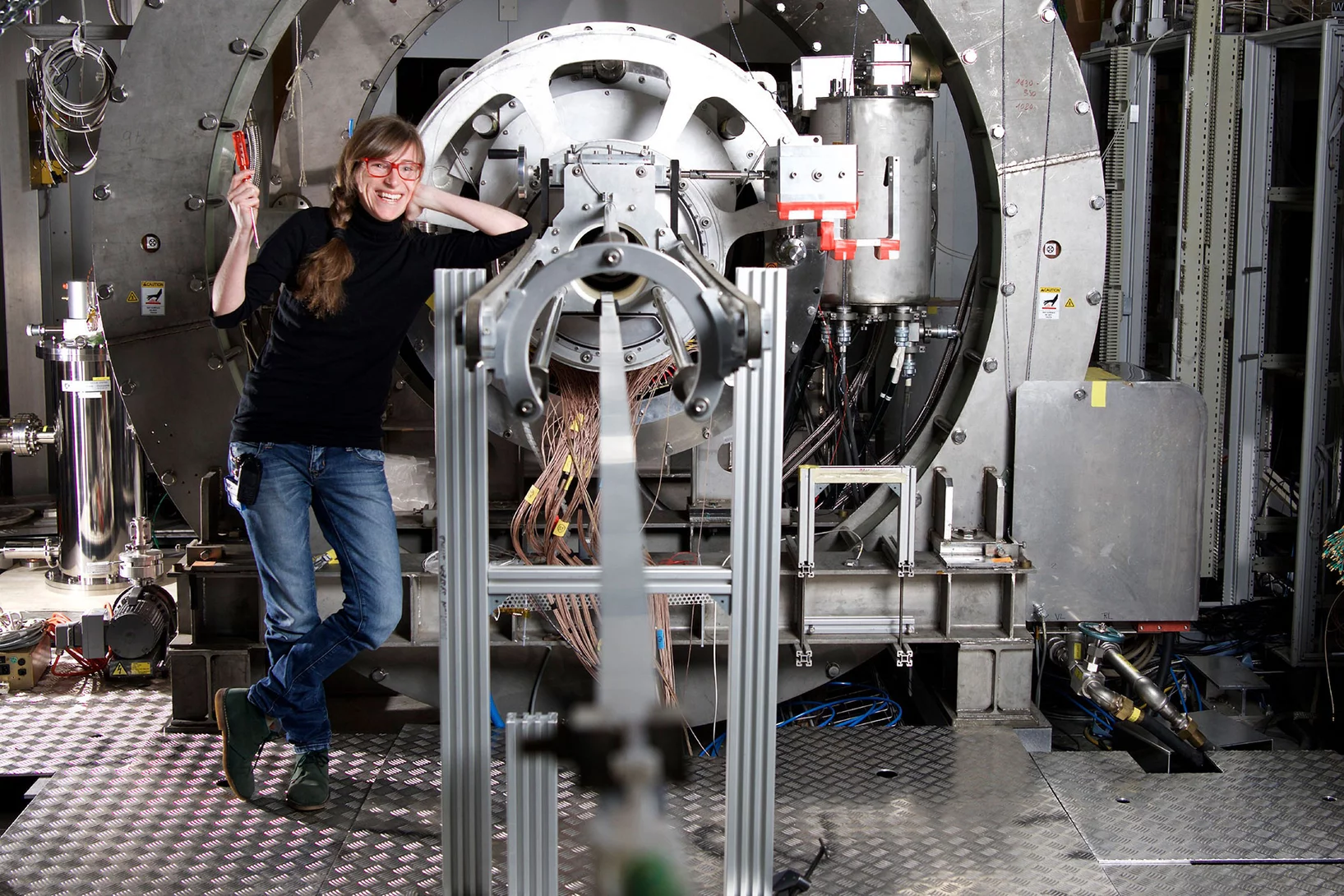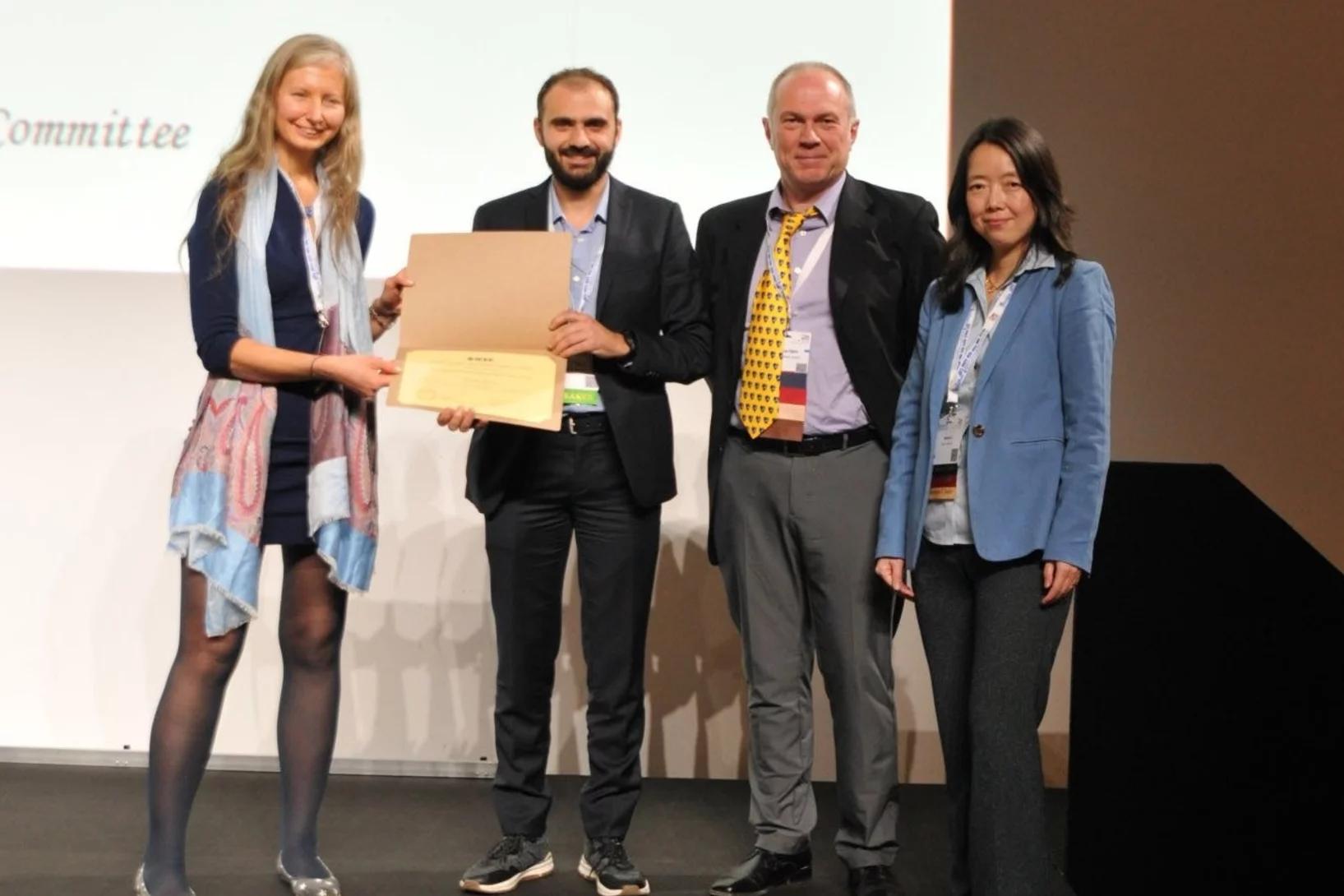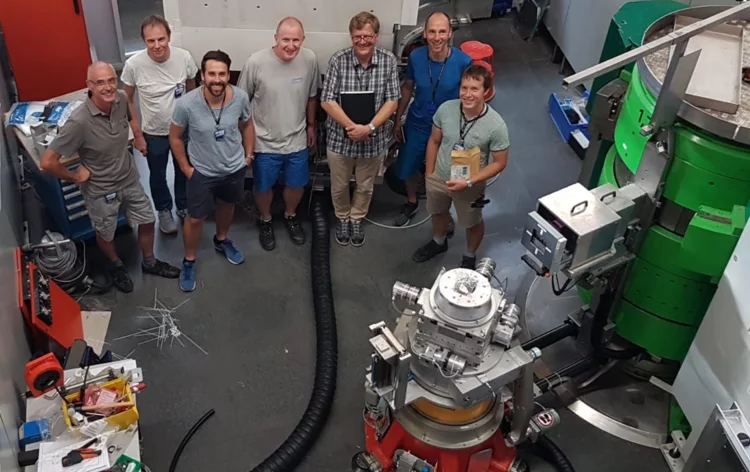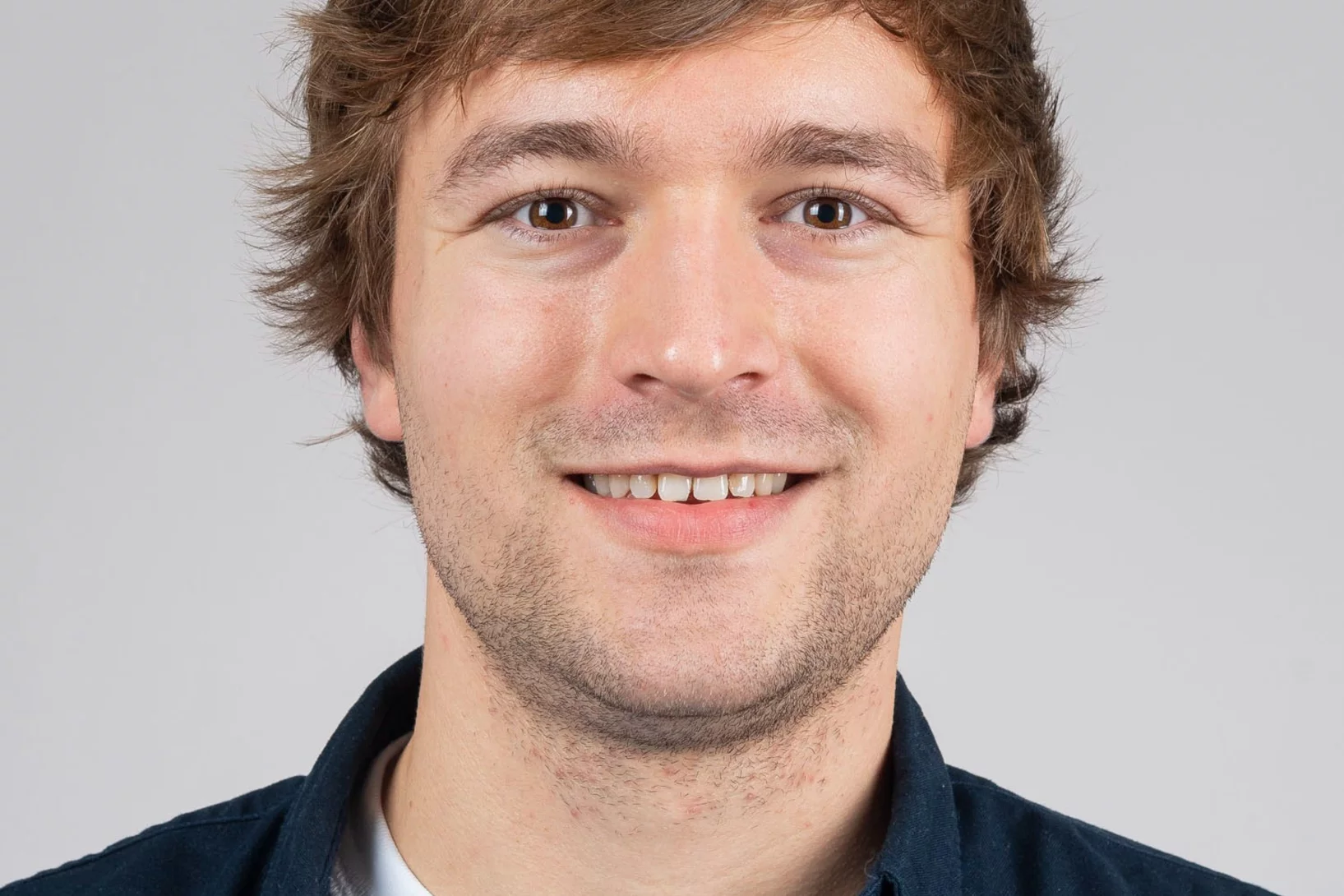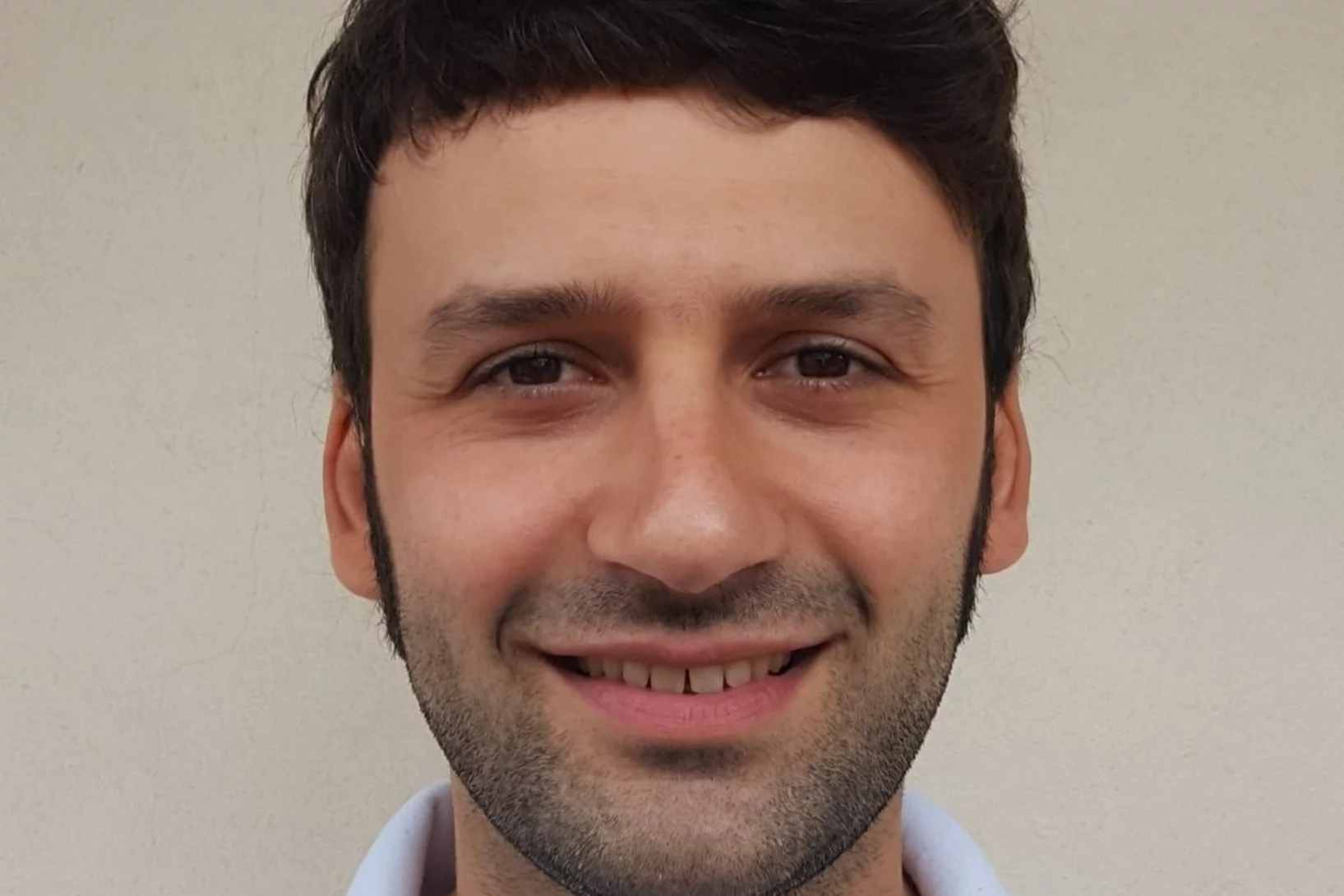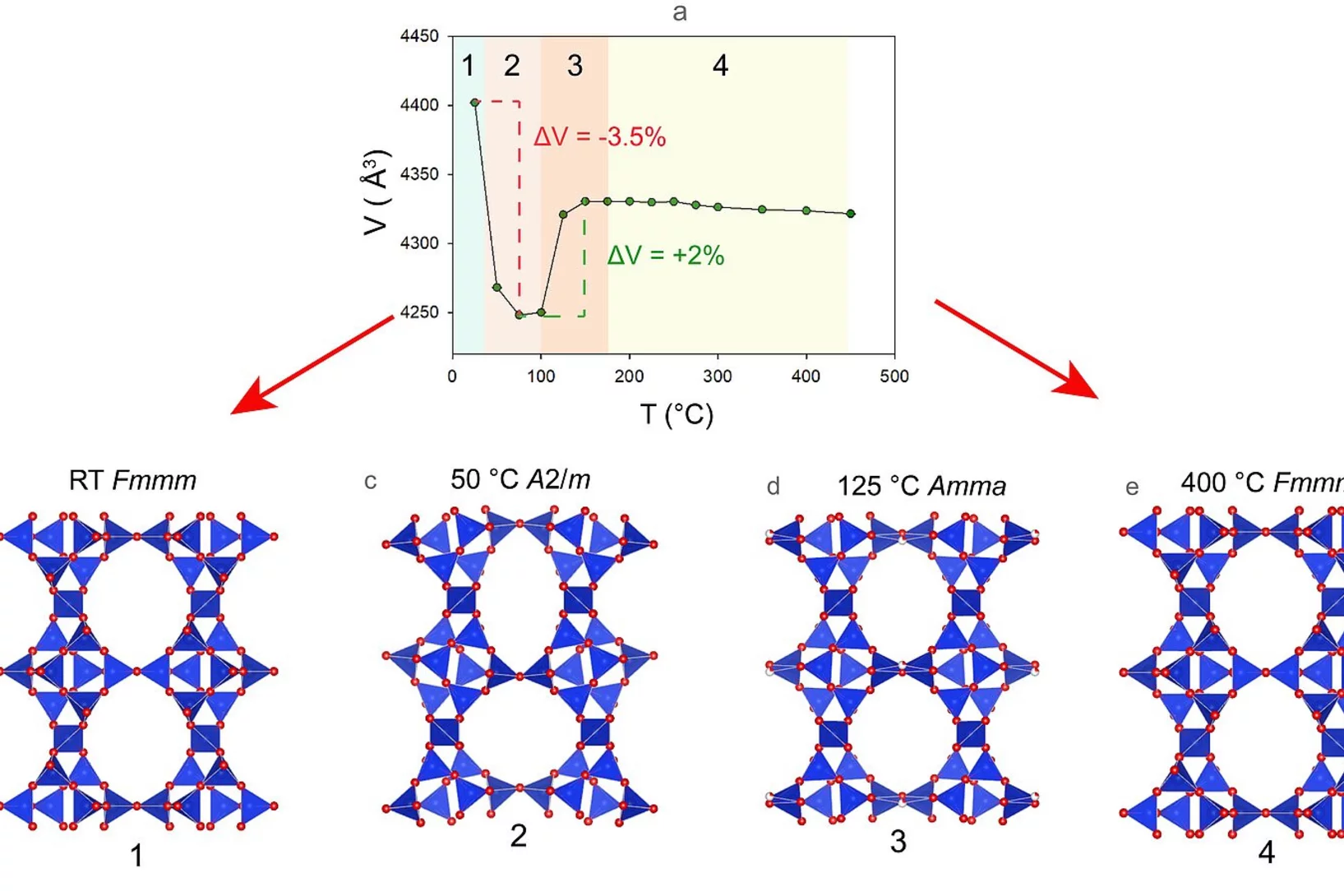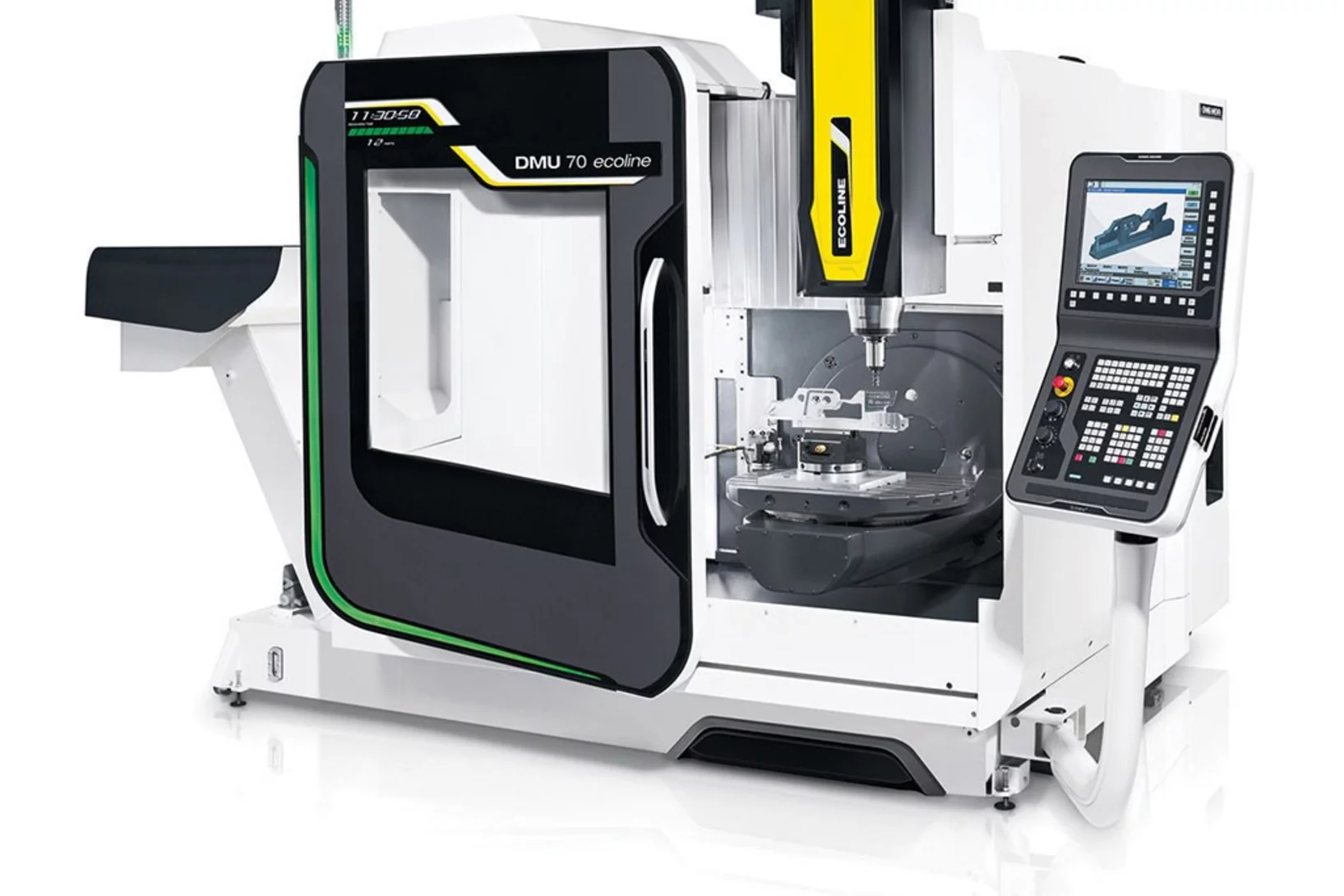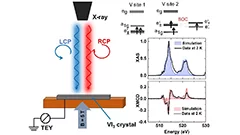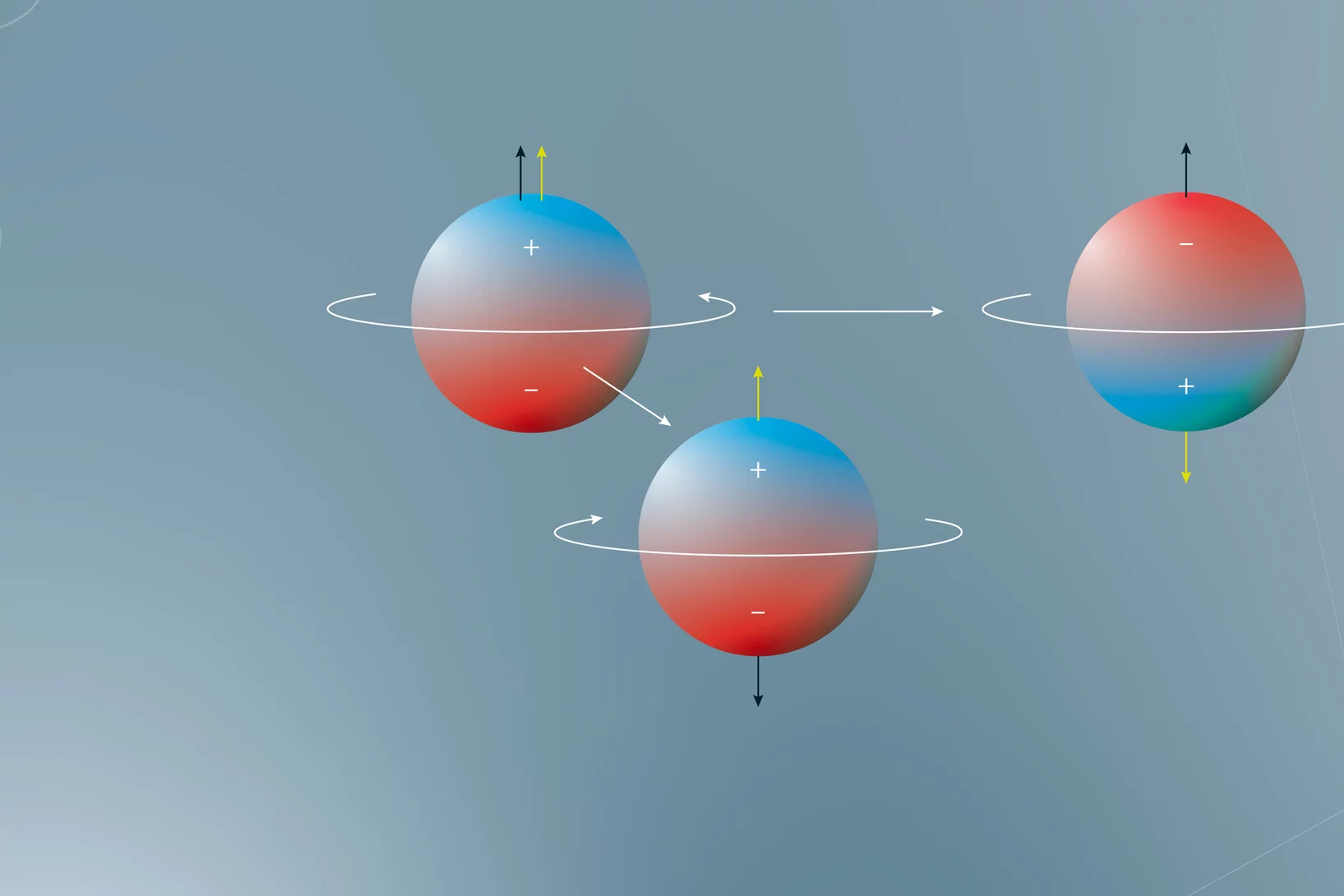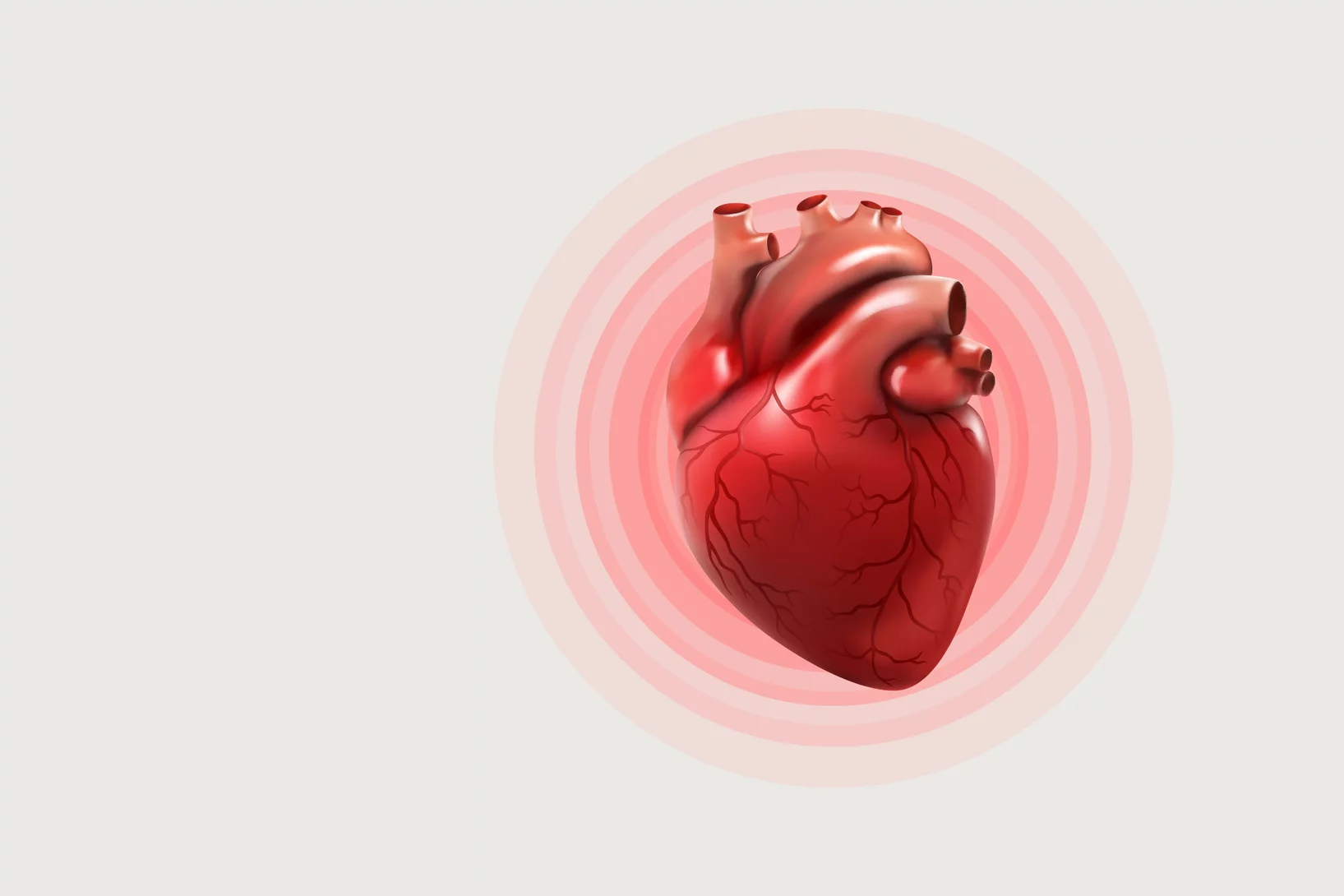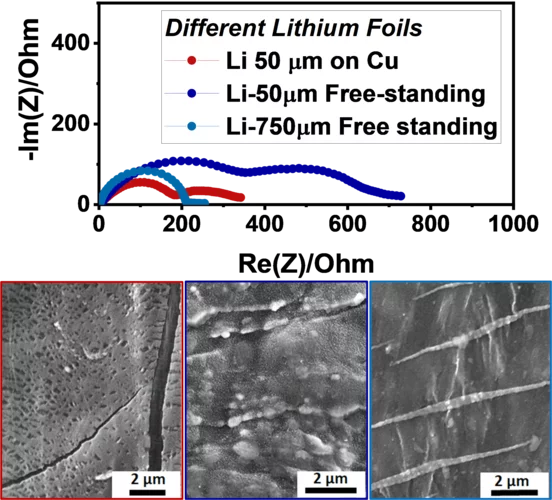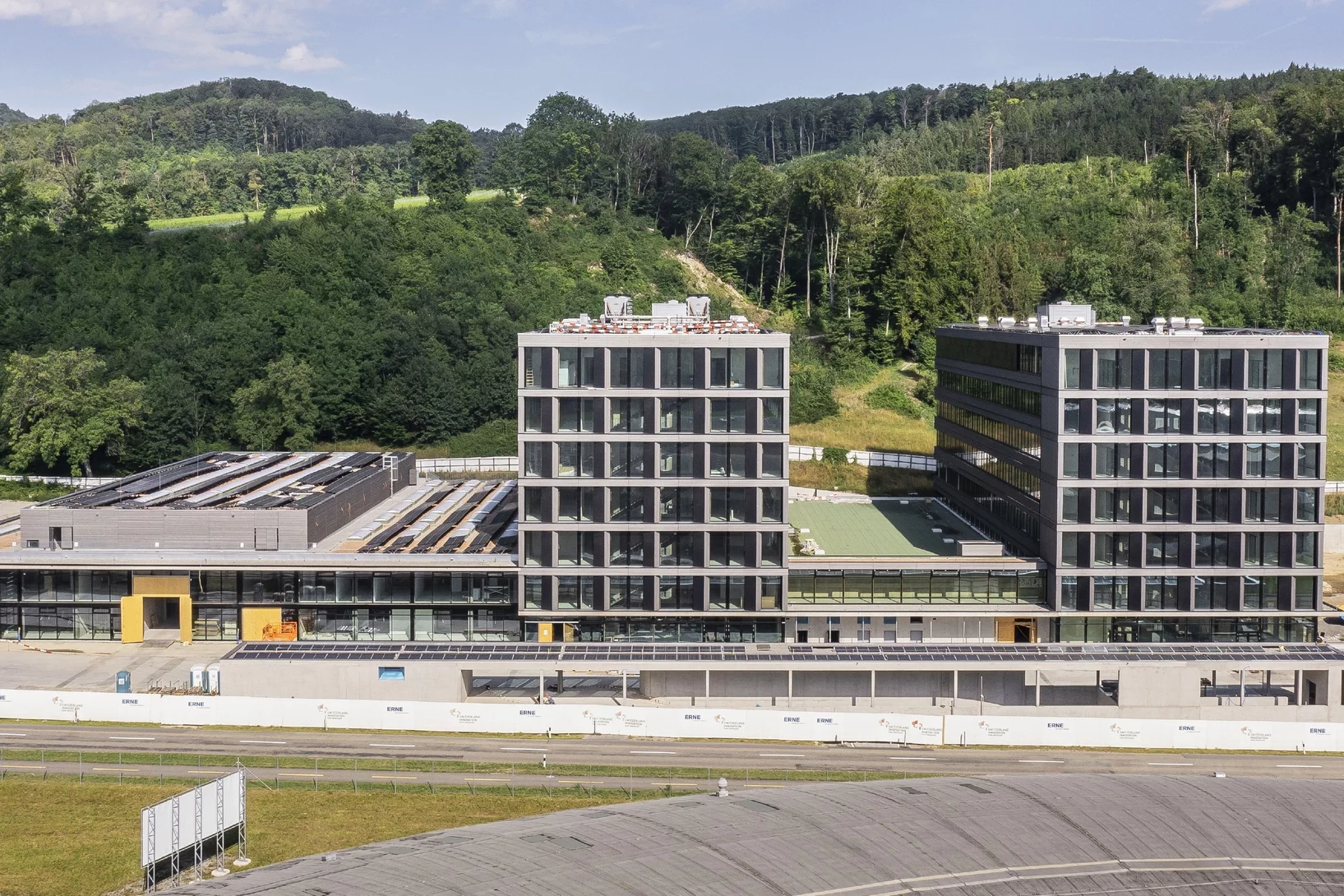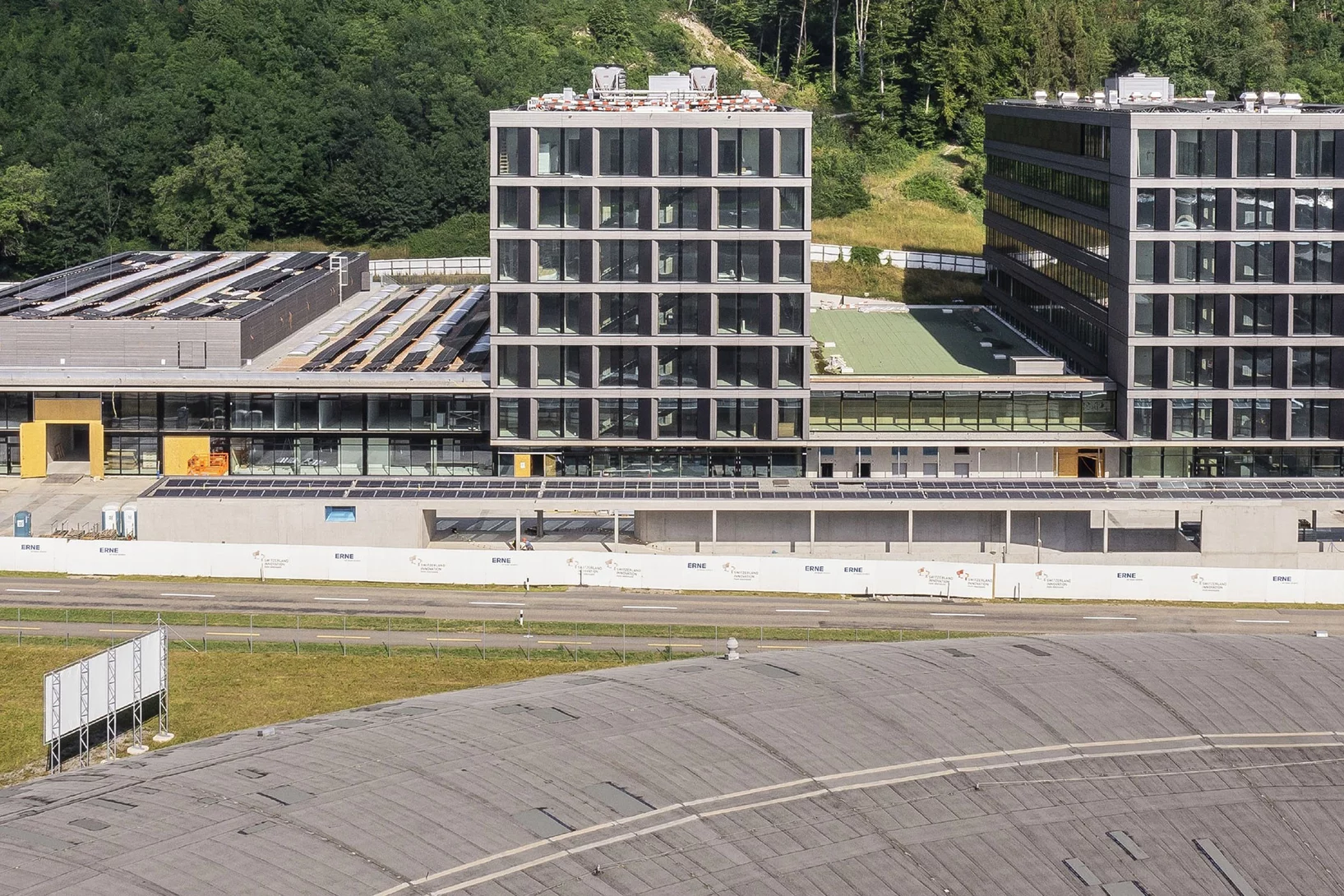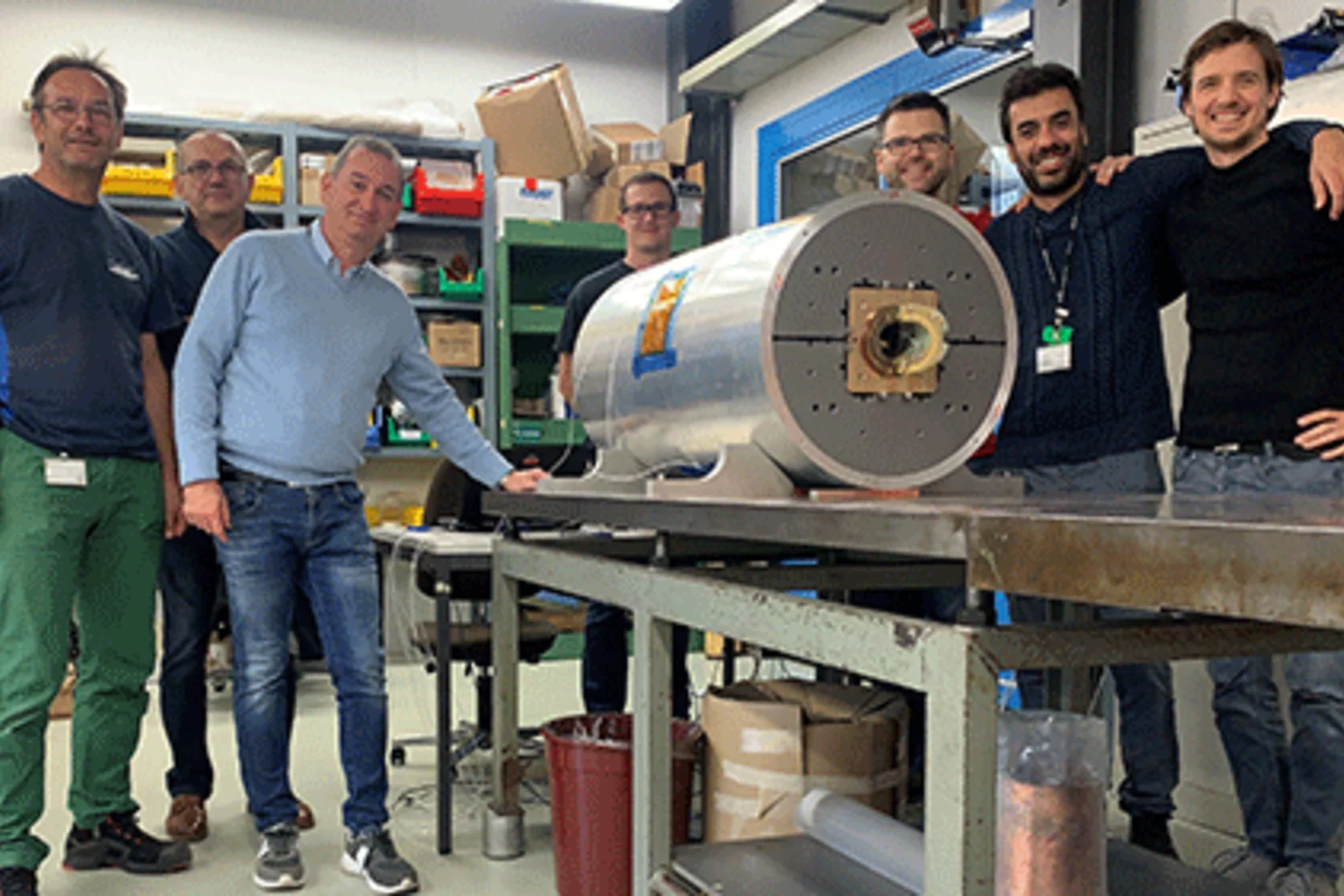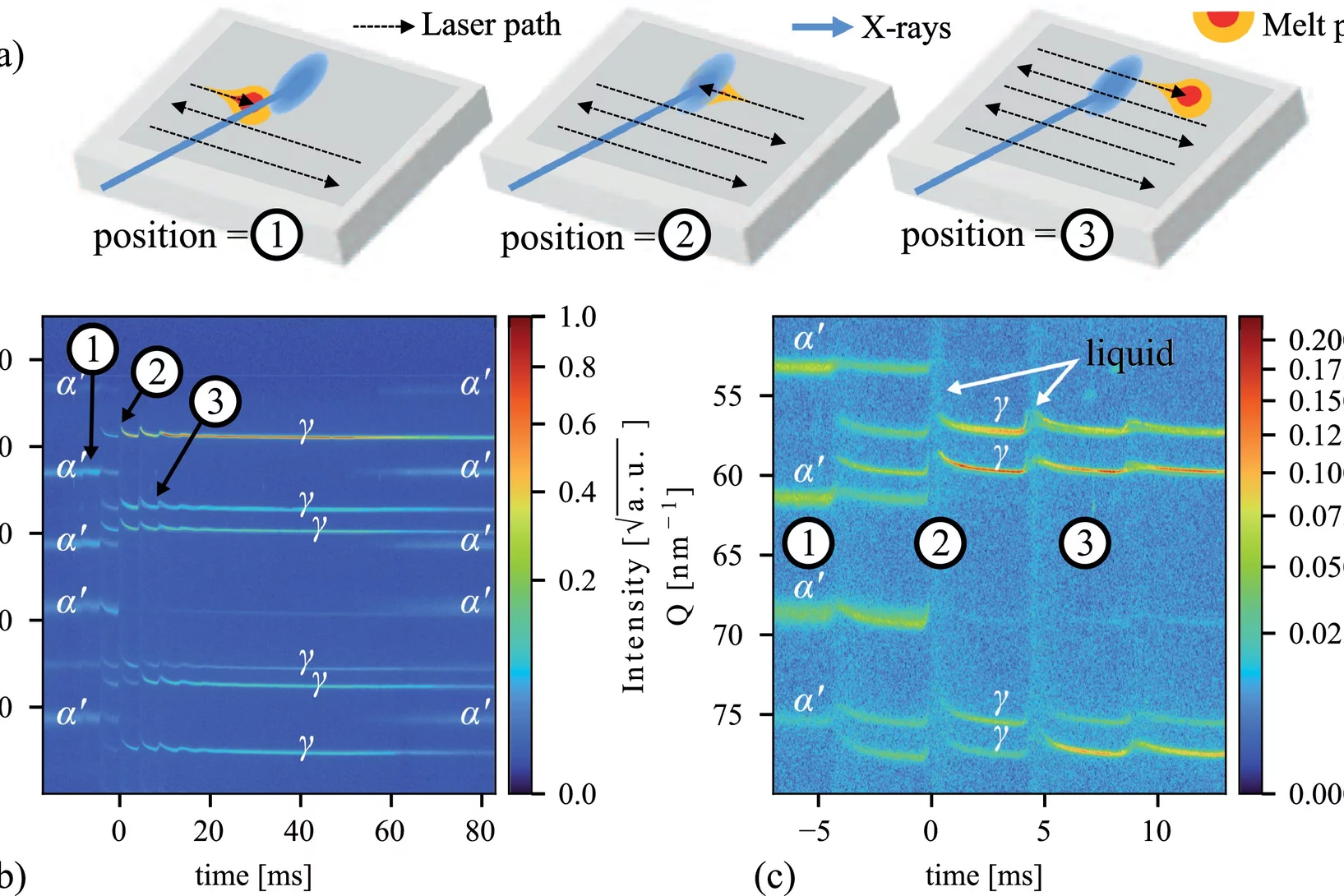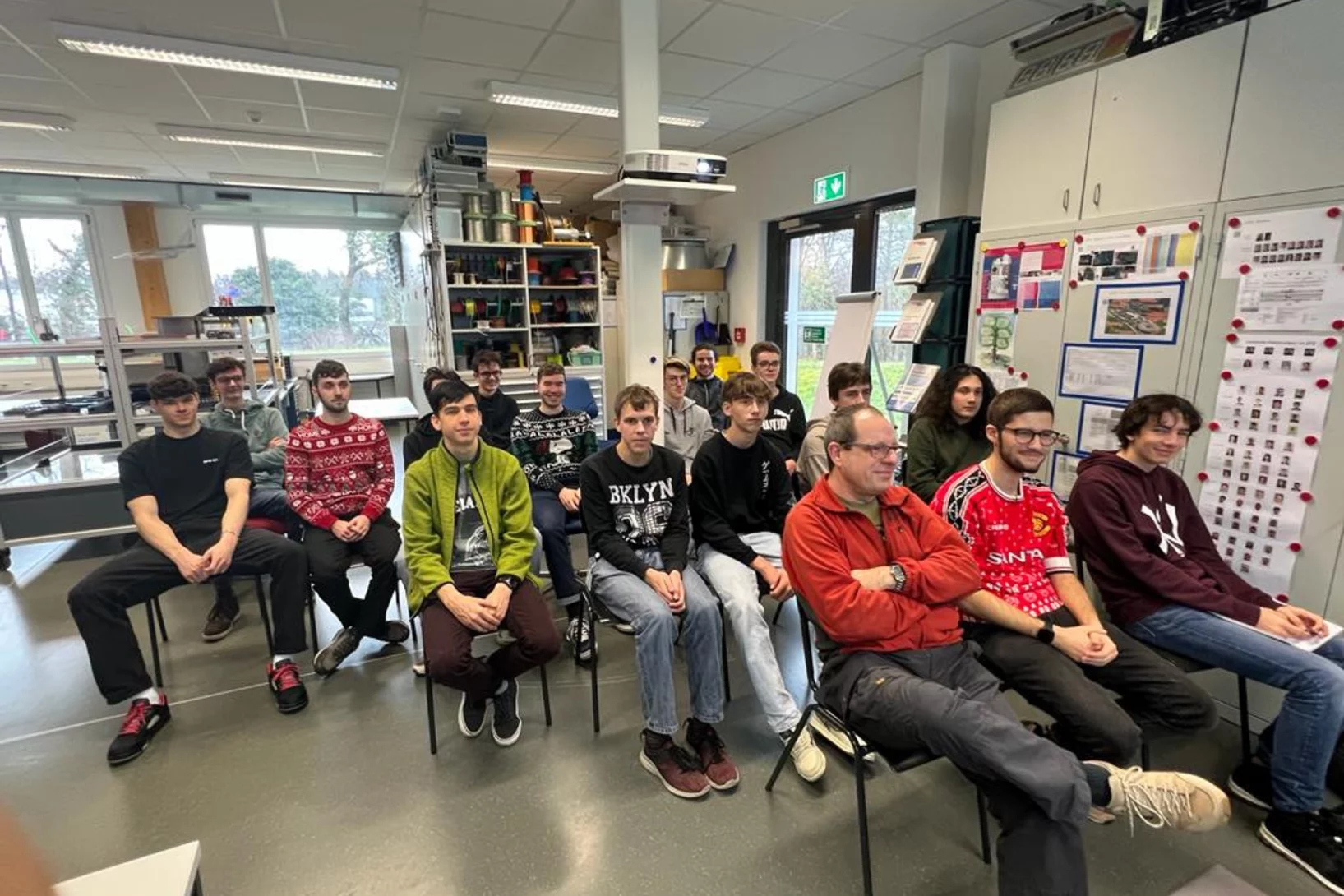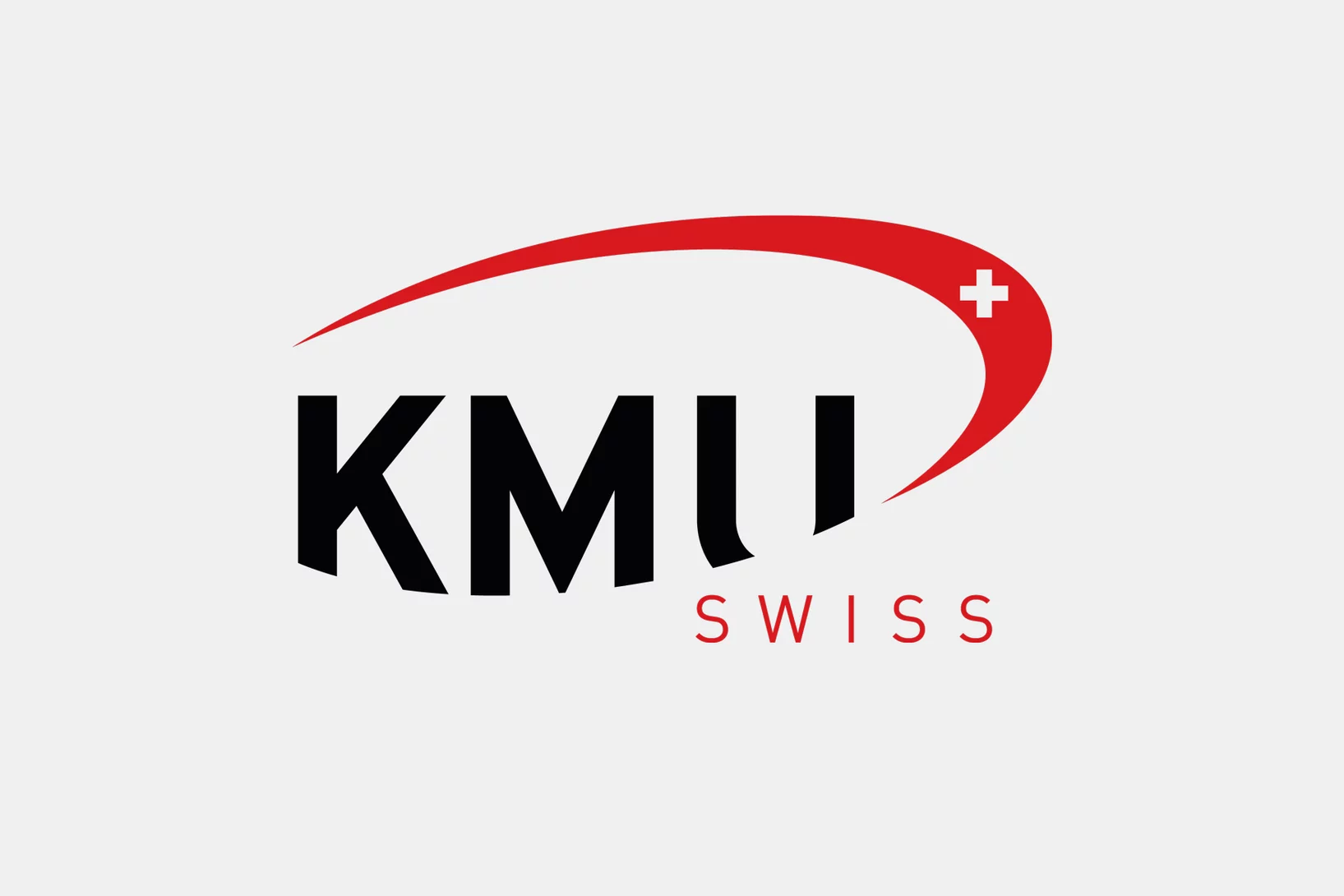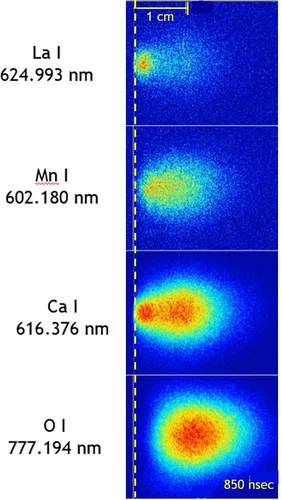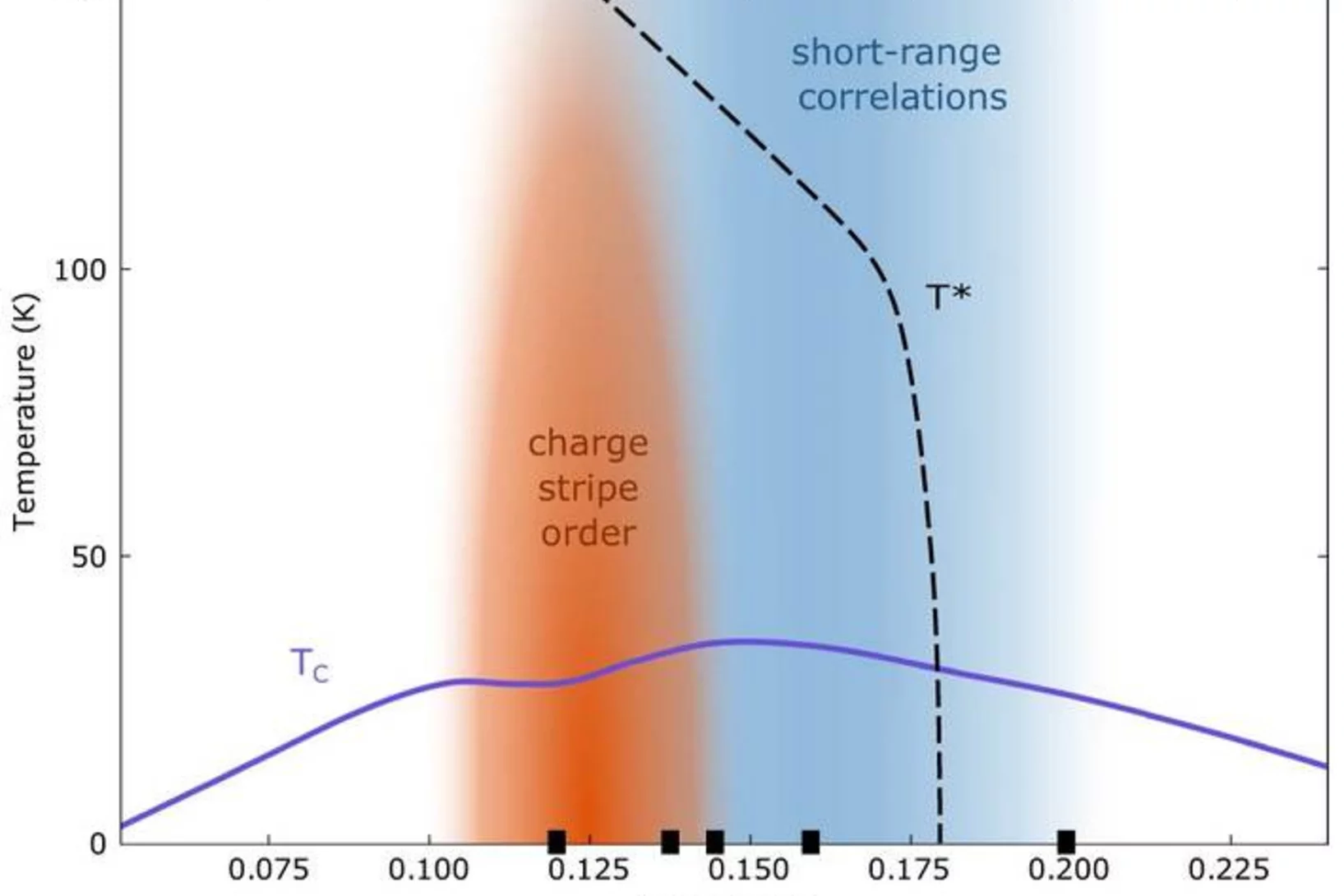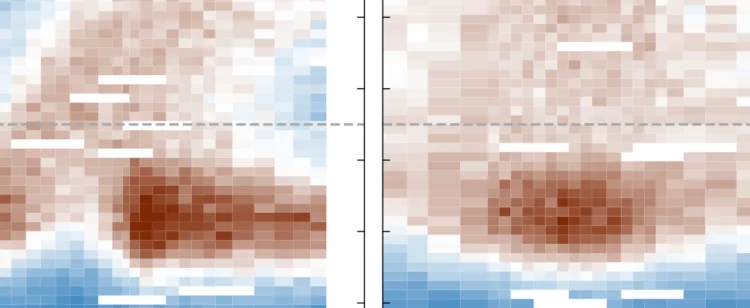Shifting away from nuclear energy, expanding solar and wind power, generating energy from biomass, reducing energy consumption. Switzerland is committed to becoming climate-neutral by 2050. An ambitious goal, which has become more urgent than ever due to the increasingly challenging geopolitical situation. How can a sustainable and resilient energy supply for Switzerland be established over the coming years? What's the optimal way to use renewable energy sources? What new technologies are especially promising? At PSI, researchers are seeking answers to these crucial questions.
Team Charta für die Berufsbildung
Gelebte Werte und das Zusammenarbeiten wurden gemeinsam an einem Teamanlass erarbeitet.
How to squash things carefully
A new in situ uniaxial pressure cell at Paul Scherrer Institute PSI gives scientists unrivalled control to tweak quantum materials microscopically and tune their properties.
High-tech company VDL ETG: PSI’s new neighbour
The Dutch company VDL ETG has signed a rental agreement with Park Innovaare.
Lehrvertragsunterzeichnung 2023
Ein grosser Moment für die kommenden Lernenden und Praktikanten
High-tech company VDL ETG: PSI’s new neighbour
The Dutch high-tech company VDL Enabling Technologies Group (VDL ETG) and its subsidiaries such as VDL ETG Switzerland AG are banking on closer cooperation with research institutions. On 9 February 2023 VDL signed a rental agreement with Park Innovaare, a business innovation hub next to the PSI campus in Villigen Switzerland. VDL ETG has already been working with PSI for many years, and this step now makes it an official member of Park Innovaare’s innovation ecosystem.
Encouraging equal opportunities in research
International Day of Women and Girls in Science: To celebrate the day, we present five outstanding women working in science at PSI.
Visualizing Higher-Fold Topology in Chiral Crystals
Novel topological phases of matter are fruitful platforms for the discovery of unconventional electromagnetic phenomena. Higher-fold topology is one example, where the low-energy description goes beyond standard model analogs. Despite intensive experimental studies, conclusive evidence remains elusive for the multigap topological nature of higher-fold chiral fermions. In this Letter, we leverage a combination of fine-tuned chemical engineering and photoemission spectroscopy with photon energy contrast to discover the higher-fold topology of a chiral crystal.
Spectroscopy vs. Electrochemistry: Catalyst Layer Thickness Effects on Operando/In Situ Measurements
Operando/in situ spectro-electrochemical studies often require high loadings and thick catalyst layers (CLs) leading to large ion- and mass-transport limitations. In this study we investigate PdH-formation in two Pd-catalysts with similar surface areas but drastically different morphologies. Our results unveil that the CL-thickness largely determines the PdH formation trends calling for the minimization of the CL-thickness in such experiments.
IEEE Early Career Award 2022
For contributions to the development of detectors for XFELs and specifically for their verification, characterization, and calibration
Commissioning of the novel Continuous Angle Multi-energy Analysis spectrometer at the Paul Scherrer Institut
We report on the commissioning results of the cold neutron multiplexing secondary spectrometer CAMEA (Continuous Angle Multi-Energy Analysis) at the Swiss Spallation Neutron Source at the Paul Scherrer Institut, Switzerland. CAMEA is optimized for ...
Welcome Vlad
Vladislav Zobnin is a new Phd student, who has recently joined the group of Isotope and Target Chemistry. He will work on the “PASCAL” project (EU), under the supervision of Dr. Jörg Neuhausen.
PSI Alumni Careers: Marco Taddei – from Postdoctoral Researcher at ENE to Associate Professor at the University of Pisa, Italy
The PSI Career Blog features PSI alumni and their career paths to highlight the versatility of the PSI community, and inspire the young generation. Today with Marco Taddei, who is telling us about his postdoc experience at PSI, and the transition to his current job as associate professor at the University of Pisa, Italy.
Simulations on "Piz Daint" explain surprising mineral behaviour
Zeolites are a class of shapely, colourful minerals with very special properties, making them omnipresent in our surroundings. They accelerate chemical reactions, absorb hazardous contaminants and water to a high degree, for example. Their only limitation is that they usually lose their peculiar crystalline structure at high temperatures. Now researchers at the University of Bern have found an unexpected exception.
6-wöchiges Praktikum in der Firma Heinz Baumgartner AG
Ich durfte ein spannendes 6-Wöchigespraktikum in der Firma Heinz Baumgartner AG in Tegerfelden machen. Das Praktikum war auf zwei Teile aufgeteilt. In den ersten 4 Wochen durfte ich die Serienfertigung an den CNC Maschinen kennenlernen. In den letzten 2 Wochen durfte ich noch ein wenig bei der Montage mithelfen.
Proposals with Russian participation
Due to the ongoing conflict in Ukraine, PSI cannot accept proposals for beam time and visits from scientists affiliated to organisations based in Russia or Belarus until further notice.
Discovery of a large unquenched orbital moment in a 2D van der Waals ferromagnet
3d transition metals often exhibit a quenched orbital moment when in a solid state system. Therefore, the proposition of a large unquenched orbital moment for V in VI3 caused some surprise and discussion in the scientific community. Experimental and theoretical works diverge on the fact of whether the orbital moment is quenched or not. In our work we have been able to give an answer this open issue, proposing also a model for the ground state of VI3.
More light in the darkness
At PSI, researchers want to fill the missing gaps in the Standard Model of particle physics with the help of the large research facilities.
Unconventional superconductivity found in kagome metal
Physicists using muon spin spectroscopy at PSI make the missing link between their recent breakthrough in Nature and unconventional superconductivity
X-ray tomography helps understand how the heart beats
Researchers at the Swiss Light Source SLS use X-ray phase contrast imaging to study a heart in action as it beats.
Updated electrochemical impedance model for understanding the interface of metallic lithium
Lithium metal negative electrodes are often used as counter electrodes while testing other electrochemically active materials, and are considered to be equivalent, independently of their thickness, supplier and production processes used. Here, we clearly demonstrate, using Electrochemical Impedance spectroscopy (EIS) that it is not the case, as well as the often-used symmetric cells are actually not so symmetric, when EIS spectra are disentangled using Thee-electrode cells.
Swiss PIC to support Swiss photonics industry
The technology transfer centre Swiss PIC was founded at the beginning of January 2023. Swiss PIC will be located in the Park Innovaare, in the immediate vicinity of PSI, one of its founding partners alongside other industry and research stakeholders. The new centre aims to facilitate innovation in packaging and integration of optical systems and to make these accessible to industry.
Swiss PIC to support Swiss photonics industry
The technology transfer centre Swiss PIC will be located in the Park Innovaare.
CHART MagDev CCT Dipole achieves record field
As one of the first CHART projects, the MagDev activity at PSI designed and built a canted-cosine theta (CCT) demonstrator magnet, wound from Nb3Sn conductor.
Solidification modes during additive manufacturing
The thermal conditions during laser-based additive manufacturing are inferred from high-speed X-ray diffraction data and can be linked to a model for rapid solidification.
Elektroniker-Sitzung vom 23.12.2022
In jedem Quartal führen alle Elektroniker-Lernenden mit den Berufsbildnern eine Sitzung, wo alle synchronisieren. Hier berichten wir über die letzte Sitzung 2022.
PSI at the this year’s KMU Swiss Symposium!
This year's KMU Swiss Symposium will take place in Baden, Kt. Aargau, on 23 March - we are pleased to be physically present again this year!
The KMU Swiss Symposium offers a platform for exchange and inspiration - this is made possible by exciting presentations, various booths with innovative projects and networking.
Listen to exciting presentations on the topic of "The power of trust - manipulation versus trust" by, among others, Swiss Army Chief Thomas Süssli; or Ivano Somaini, Security Analyst at Compass Security Schweiz AG.
PSI will be there - visit us at our joint booth with the Hightech Zentrum Aargau and find out more about how we can support industry and SMEs with their technical challenges and innovation processes.
PLD plasma plume analysis, a summary of the PSI contribution
We report on the properties of laser-induced plasma plumes generated by ns pulsed excimer lasers as used for pulsed laser deposition to prepare thin oxide films. A focus is on the time and spatial evolution of chemical species in the plasma plume as well as the mechanisms related to the plume expansion. The overall dynamics of such a plume is governed by the species composition in particular if three or more elements are involved. We studied the temporal evolution of the plume, the composition of the chemical species in the plasma, as well as their electric charge. In particular, ionized species can have an important influence on film growth. Likewise, the different oxygen sources contributing to the overall oxygen content of an oxide film are presented and discussed. Important for the growth of oxide thin films is the compositional transfer of light element such as oxygen or Li. We will show and discuss how to monitor these light elements using plasma spectroscopy and plasma imaging and outline some consequences of our experimental results.
Das alljährliche Weihnachtsessen der Automatiker
Wir Automatiker Lernenden vom PSI pflegen jährlich untereinander einen gemeinsamen Abschluss des Jahres, den wir euch gerne näherbringen wollen.
Fate of charge order in overdoped La-based cuprates
In high-temperature cuprate superconductors, stripe order refers broadly to a coupled spin and charge modulation with a commensuration of eight and four lattice units, respectively. How this stripe order evolves across optimal doping remains a controversial question. Here we present a systematic resonant inelastic x-ray scattering study of weak charge correlations in La2−xSrxCuO4 and La1.8−xEu0.2SrxCuO4. Ultra high energy resolution experiments demonstrate the importance of the separation of inelastic and elastic scattering processes. Long-range temperature-dependent stripe order is only found below optimal doping. At higher doping, short-range temperature-independent correlations are present up to the highest doping measured. This transformation is distinct from and preempts the pseudogap critical doping. We argue that the doping and temperature-independent short-range correlations originate from unresolved electron–phonon coupling that broadly peaks at the stripe ordering vector. In La2−xSrxCuO4, long-range static stripe order vanishes around optimal doping and we discuss both quantum critical and crossover scenarios.
Fate of charge order in overdoped La-based cuprates
In high-temperature cuprate superconductors, stripe order refers broadly to a coupled spin and charge modulation with a commensuration of eight and four lattice units, respectively. How this stripe order evolves across optimal doping remains a controversial question. Here we present a systematic resonant inelastic x-ray scattering study of weak charge correlations in La2−xSrxCuO4 and La1.8−xEu0.2SrxCuO4. Ultra high energy resolution experiments demonstrate the importance of the separation of inelastic and elastic scattering processes.

